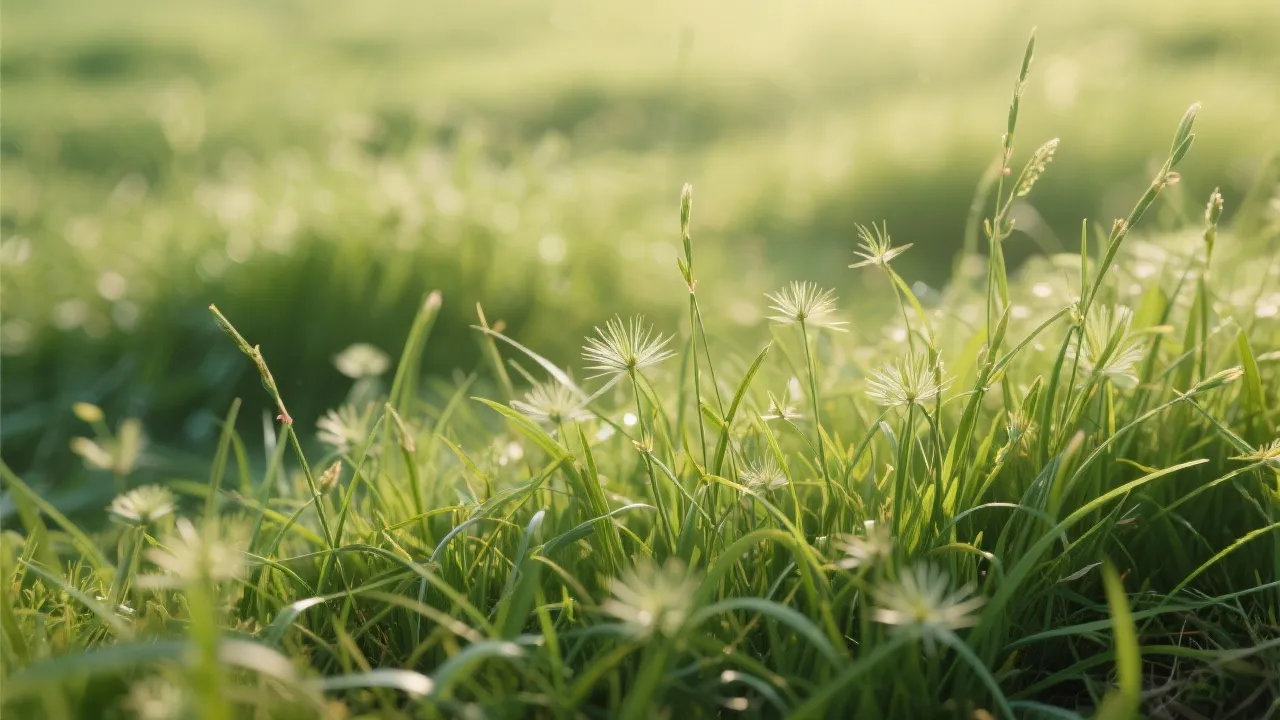Understanding the Zanc Poa Phenomenon
This article delves into the fascinating world of Zanc Poa, a grass species renowned for its unique ecological attributes. As an adaptable and durable plant, Zanc Poa thrives in various climates, making it a topic of interest for both botanists and agriculturists. Through this comprehensive exploration, readers will gain insights into its growth patterns, applications, and environmental significance.

The Distinctive Appeal of Zanc Poa
Zanc Poa is a significant grass species valued for its ecological versatility and resilience. This remarkable plant is often found thriving in diverse environments, from urban landscapes to rural settings. Its adaptability to various soil conditions and climates makes it a subject of great interest to botanists and environmentalists alike. The plant's distinct characteristics not only contribute to its survival but also enhance the ecosystems it inhabits. With its deep roots and capacity to flourish in a variety of terrains, Zanc Poa is a standout example of nature's ingenuity.
Ecological Significance
The ecological impact of Zanc Poa is worthy of note. It serves as a beneficial plant in erosion control, providing stability to soil structures and preventing degradation. Its robust root system aids in the retention of soil moisture, thereby fostering a healthier environment for surrounding flora and fauna. In regions susceptible to land degradation, Zanc Poa can be a crucial component in land rehabilitation efforts. Furthermore, its adaptability means Zanc Poa can often be found as a pioneer species in newly disturbed areas. This role is critical; pioneer species are the first to colonize barren environments, paving the way for subsequent ecological stages and aiding in ecological succession. For instance, in post-fire areas, Zanc Poa often emerges quickly, promoting soil repair and creating a foundation for other plant species to return.
A Closer Look at Growth Patterns
The growth patterns of Zanc Poa reveal its robust nature. It exhibits a rapid germination rate, allowing it to establish quickly across various terrains. Zanc Poa's growth is sustained by its durable root system, which penetrates deeply, drawing nutrients and water even in challenging conditions. Its leaves, slender and resilient, capture sunlight efficiently, supporting the plant's energy needs. The plant's capacity to photosynthesize and grow in less-than-ideal light conditions allows it to flourish under shaded environments such as dense canopies, a capability that many other grass species lack. Such versatility in growth is particularly valuable in areas undergoing habitat restoration, where immediate ground cover is essential to prevent soil erosion and maintain ecosystem stability.
Applications in Agriculture and Landscaping
In agriculture, Zanc Poa is gaining attention for its potential as a sustainable cover crop. Its fast growth and ability to suppress weeds naturally make it an appealing choice for organic farming practices. The inclusion of Zanc Poa in crop rotation can enhance soil fertility and structure, leading to better yields in subsequent planting cycles. Moreover, the plant's capacity to fix nitrogen can improve soil health, providing a dual benefit for farmers looking to maintain organic standards. In landscaping, Zanc Poa's aesthetic qualities—lush, green blades that create a dense, carpet-like cover—are prized for enhancing both residential gardens and public greenspaces. Homeowners and landscapers are increasingly turning to Zanc Poa for creating low-maintenance lawns that require less irrigation compared to traditional grass types. With a properly managed watering schedule, Zanc Poa can thrive even in drought conditions, making it an ideal choice for regions facing water scarcity.
| Aspect | Features |
|---|---|
| Growth Rate | Rapid germination and establishment across multiple environments. |
| Soil Requirements | Thrives in varied soil types, from sandy to clay-rich substrates. |
| Environmental Role | Stabilizes soil, prevents erosion, and facilitates ecological succession. |
| Applications | Used in agriculture as cover crops and in landscaping for ornamental purposes. |
Research and Development
Continued research into Zanc Poa is revealing even greater possibilities for its use, especially in the context of changing climatic conditions. Studies are focusing on its resilience to climate change, particularly its ability to withstand extreme temperature fluctuations and drought conditions. For instance, recent studies have demonstrated that Zanc Poa exhibits a remarkable tolerance to water stress, allowing it to maintain growth and survival rates when other species may fail. The aim is to leverage these traits to develop solutions for agricultural and environmental challenges worldwide. As climate change poses significant risks to global food security, understanding how Zanc Poa can contribute to sustainable agriculture becomes increasingly important. Furthermore, breeding programs are exploring genetic variations within the species to enhance these traits, potentially leading to even more robust cultivars that can adapt to a wider range of environmental stresses.
Competitive Advantages Over Other Grass Species
One of the competitive advantages of Zanc Poa over other grass species is its ability to thrive in marginal soils—places where many conventional crops would struggle. It can tolerate higher salinity levels, making it suitable for areas affected by coastal salt intrusion or irrigation practices that lead to salinization. In regions prone to flooding, Zanc Poa's roots can stabilize banks and prevent soil erosion while helping to filter potential pollutants from water runoff. In contrast, many traditional grass species may succumb to these harsh conditions, giving Zanc Poa a clear edge in both reclamation efforts and as a resilient agricultural option.
FAQs
- What makes Zanc Poa unique compared to other grass species?
Zanc Poa's adaptability to various soils and climates, alongside its role in ecological restoration, sets it apart. Its tolerance to extreme environmental conditions allows it to thrive in less-than-ideal habitats, making it a valuable asset for both agriculture and conservation. - Can Zanc Poa be used for DIY landscaping projects?
Absolutely! Its aesthetic appeal and ease of growth make it ideal for home gardens. Additionally, because it requires less maintenance than conventional grasses, it’s perfect for homeowners seeking low-effort landscaping solutions. - Is Zanc Poa environmentally friendly?
Yes, its role in soil stabilization and moisture retention contributes positively to the environment. The plant's ability to improve soil health over time while supporting local biodiversity enhances its environmental credentials. - Where is Zanc Poa commonly found?
Zanc Poa is widely distributed and can be found thriving in different regions, adapting to local conditions. Its widespread presence allows for ecosystem services that can benefit both agriculture and natural landscapes. - How does Zanc Poa contribute to biodiversity?
Beyond its direct benefits, Zanc Poa provides habitat for various organisms. Its dense growth creates a microhabitat that supports insects, birds, and small animals, reinforcing the overall biodiversity of an ecosystem. - What are the best conditions for cultivating Zanc Poa?
While Zanc Poa is tolerant of a range of conditions, it performs best in well-drained soils with a consistent supply of moisture. Ideal pH ranges are between 6.0 to 7.5, and the grass benefits from full sun to partial shade. - Can Zanc Poa be used for erosion control on steep slopes?
Yes, due to its strong root system, Zanc Poa is an excellent choice for erosion control on steep slopes, as it helps anchor soil and prevent washout during heavy rains.
Conclusion
Zanc Poa stands as a testament to nature's resilience and adaptability. Its myriad uses in ecological and practical applications continue to garner attention, making it an invaluable component of the global flora. As research progresses, so too will our understanding and appreciation of this remarkable grass species. The potential for Zanc Poa to help address challenges posed by climate change and agricultural demands underscores its significance in our ecosystems. We stand to benefit from its continued study and implementation, ensuring that we utilize its unique strengths to promote sustainability and environmental health. By fostering an understanding of Zanc Poa and similar species, we can pave the way for more resilient agricultural practices and healthier ecosystems, reinforcing the interconnectedness of all life on Earth.









